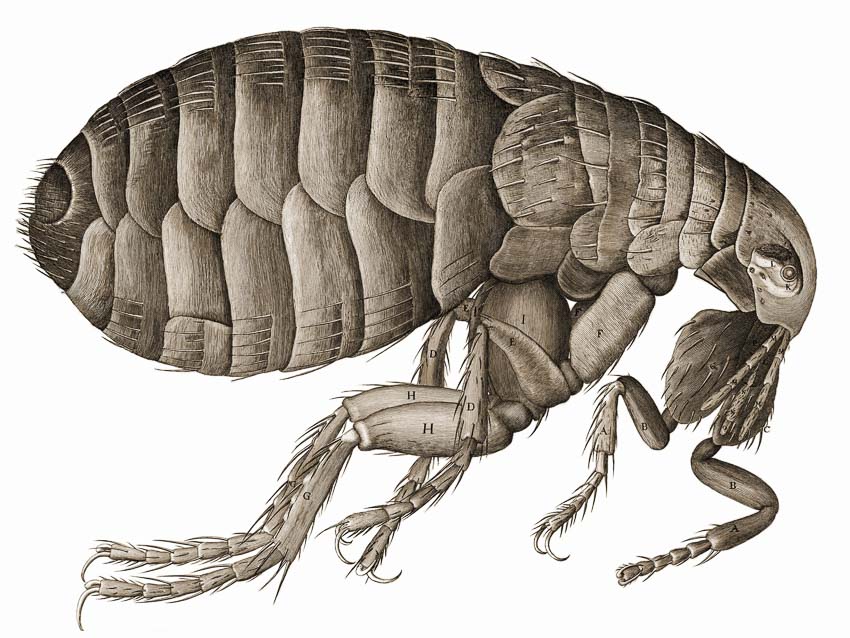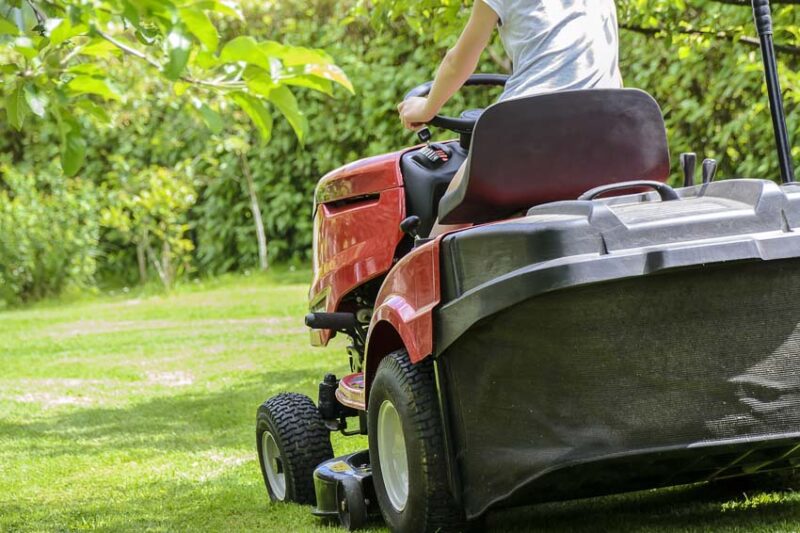Methods, Services, and Products
Fleas are difficult to control in warm weather because they breed in your yard and travel into your house on your pets. Learn how to get rid of fleas in your yard with these effective flea removal strategies.
Why It’s Important to Eliminate Fleas
Most people don’t think of fleas regarding lawn and garden pests. However, flea infestations are common, presenting serious health risks that can’t be ignored. It costs pet owners millions of dollars annually to get rid of fleas in their homes.
Health Risks for Humans and Pets
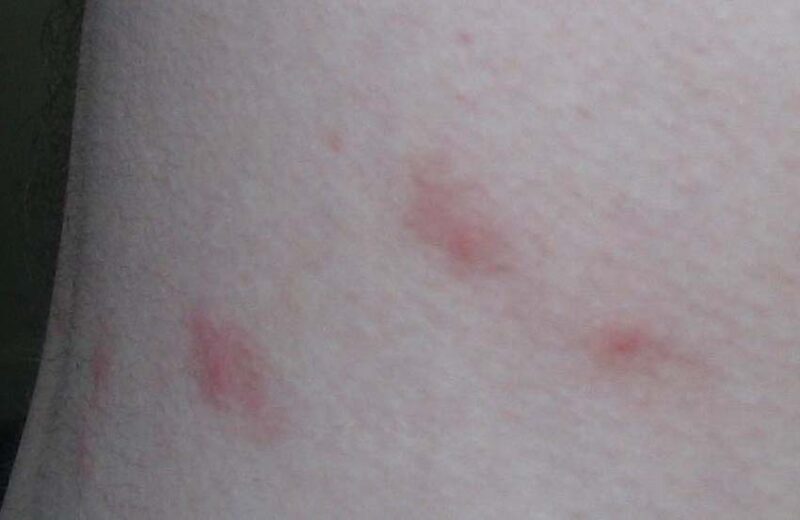
Flea bites make humans and animals uncomfortable, but they present much greater health risks. As an extreme example, fleas were responsible for spreading the Bubonic plague in the 1300s, which killed about 40% of the human population.

Advances in science have made people safer, but fleas still carry several diseases and parasites, including the following:
- Plague (Yersinia pestis)
- Flea-borne typhus (Rickettsia typhi)
- Cat scratch disease (Bartonella henselae)
- Tapeworms (Dipylidium caninum) and other parasites
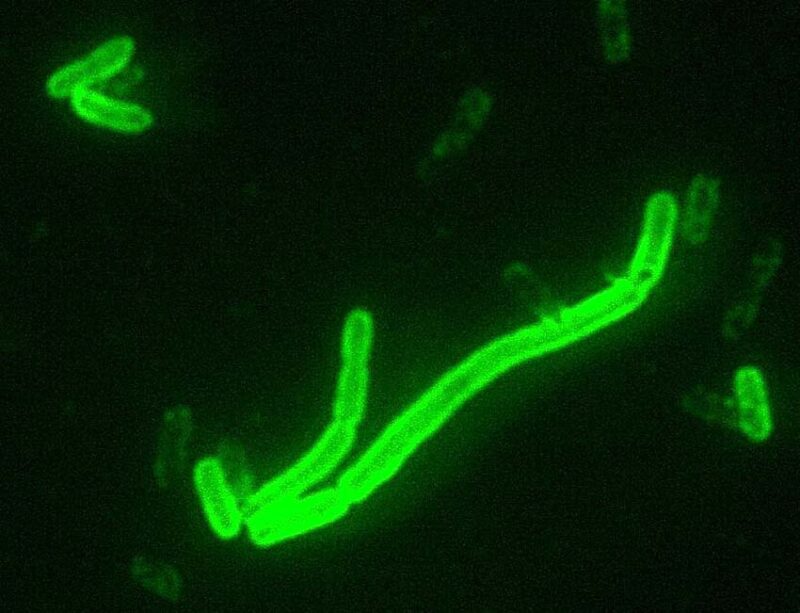
Because small children spend more time on the floor and ground, they are at greater risk of diseases and parasites than adults.
Preventing Flea Infestation Inside Your Home
There are over 2,000 species of fleas worldwide, but the most common domestic flea is the cat flea (Ctenocephalides felis). Despite their name, cat fleas don’t discriminate and are found on both dogs and cats and even bite humans.
Furthermore, rodents and other mammals carry them as well.
To protect your pets and home against fleas, it’s important to practice good sanitation and bathe pets frequently. If you notice fleas on your pets, take action immediately because fleas reproduce rapidly.
Clean your floors, vacuum your carpets, and wash your bed linens regularly to prevent flea infestations.
Preventing Flea Infestation In Your Yard
Because fleas in your yard will hitch a ride into your home, it’s important to practice good yard sanitation, too. Best landscaping practices to prevent fleas include removing debris piles and mowing regularly.
Here are more tips for preventing fleas in your yard:
- Clear the clutter from your yard.
- Mow your lawn at the right height for your type of grass.
- Remove excess thatch, which harbors pests like fleas.
- Get rid of raccoons and other pests in your yard.
- Don’t overwater because fleas love moisture.
- Use cedar mulch in the flower beds around your home’s foundation.
- Fleas like the dark, so prune your trees to let in light.
- Close off dark areas underneath porches and outbuildings to keep your pets away from places that can harbor fleas.
Best Ways to Get Rid of Fleas in Your Yard
If you already have a flea infestation in your yard, it’s time to take action. You can use natural methods for flea control or use chemicals to treat your yard to eliminate fleas.
Natural Methods for Flea Control
If you’re someone who thinks that harsh chemical cures are worse than the disease, then you’ll be glad to know that natural methods are available for flea control.
Diatomaceous Earth
A natural, non-toxic desiccant, diatomaceous earth (DE) is one of the most effective natural methods of insect control. It’s a powder made from the fossilized remains of microscopic phytoplankton called diatoms.
Under a microscope, DE looks like tiny glass shards, and it kills bugs by cutting through their exoskeletons.
DE is safe for humans. In fact, you’ll find it in toothpaste, food, medicine, and skincare products.
To get rid of fleas, spread food-grade DE on your lawn. It will also work to control grubs, snails, and slugs. Do not use pool-grade DE, which should only be used for water filtration.
Don’t try to treat your entire lawn with DE. Instead, focus on areas where you know fleas are breeding.
It doesn’t kill insects on contact, and it won’t prevent eggs from hatching. It works best when it’s not wet, so apply it on dry, sunny days. You can also use DE indoors, but it’s best to avoid using it in places with heavy foot traffic to avoid breathing the dust.
You may need to apply it several times over the course of a few months.
Nematodes
Beneficial nematodes are effective at controlling many types of creepy crawlies in your yard. They are tiny, parasitic worms that feed on the larvae of insects like fleas and beetles. They occur naturally in most soils, but you can increase their population to help cure an infestation of fleas in the yard.
The best time to apply nematodes is in mid to late August. Vendors ship them in gel, liquid, and granule form in the juvenile stage of their life cycle.
Unlike harsh chemicals, beneficial nematodes are not harmful to bees and other important pollinators.
Keep nematodes in your fridge until you’re ready to use them.
Sprinkle your lawn lightly before applying nematodes. You want them to soak into the soil without washing away, so sprinkle them again afterward. When applying nematodes for flea control, focus on the moist, shady areas of your yard, which is where fleas like to hide.
Nematodes work fast, and they are one of the best ways to get rid of fleas. You’ll see a difference in the number of fleas in your yard within 24 to 48 hours.
Keep your lawn moist for a few weeks to ensure the nematodes stay healthy.
Keeping Your Yard Clean and Well-Maintained

Good sanitation is one of the best ways to eliminate fleas in your yard.
Mow regularly, and continue to keep your yard clear of clutter and debris. Excess thatch in your lawn can also harbor fleas, and dethatching your lawn every few years is also good for your grass.
Chemical Treatments for Flea Elimination
When all else fails, you can use chemical treatments to eliminate fleas. The two most common types of chemical treatments are insect growth regulators (IGR) and insect development inhibitors (IDI).
Insect Growth Regulators
IGRs are the chemicals used in topical and oral medications to control fleas in pets. They work by affecting the growth and reproduction of fleas.
Common examples of pesticides that are used as insect growth regulators include methoxyfenozide, halofenozide, and tebufenozide. While the typical use for homeowners is oral pet medications, they also come in liquids for spraying and aerosols like in-home foggers.
IGRs work more slowly than other types of insecticides. It may take up to 10 days before you notice a difference in the number of fleas after using an IGR product. However, they have a long residual effect and can last for about seven months.
Since they are used to disrupt the reproduction of insects, they rarely work to kill adult fleas.
Insect Development Inhibitors
IDIs and IGRs are commonly used together in medications for pets.
IDIs work by inhibiting the production of chitin, which is a substance that insects use to create their exoskeletons. It causes disruptions in molting so that fleas can’t grow.
IDIs are delivered to pets by oral medications or injections and then stored in the fat tissues, where they slowly release into the bloodstream. When adult fleas draw blood, the IDIs affect their eggs.
The most common chemicals used as IDIs are diflubenzuron and lufenuron.
Insecticides and Spray
Adult fleas represent about 5% of the flea population, but in cases of full-blown flea infestations, you need to attack fleas at every stage of the lifecycle.
Adult insecticides often come with IGRs and IDIs in flea kits, which you can use indoors and outdoors.
Ready-to-use aerosols make it easy to spray flea-control insecticides on hard surfaces like counters, laminates, and floors. Furthermore, you can apply them to carpets, rugs, and furniture.
For best results, wait ten days to 2 weeks after the first application and then reapply to target adult fleas that hatched after the initial treatment.
Killing Fleas Effectively
To kill fleas effectively and completely, it’s important to understand the flea life cycle and target each stage of development. Then, by providing continuous treatment, you can achieve lasting results.
Understanding the Flea Life Cycle
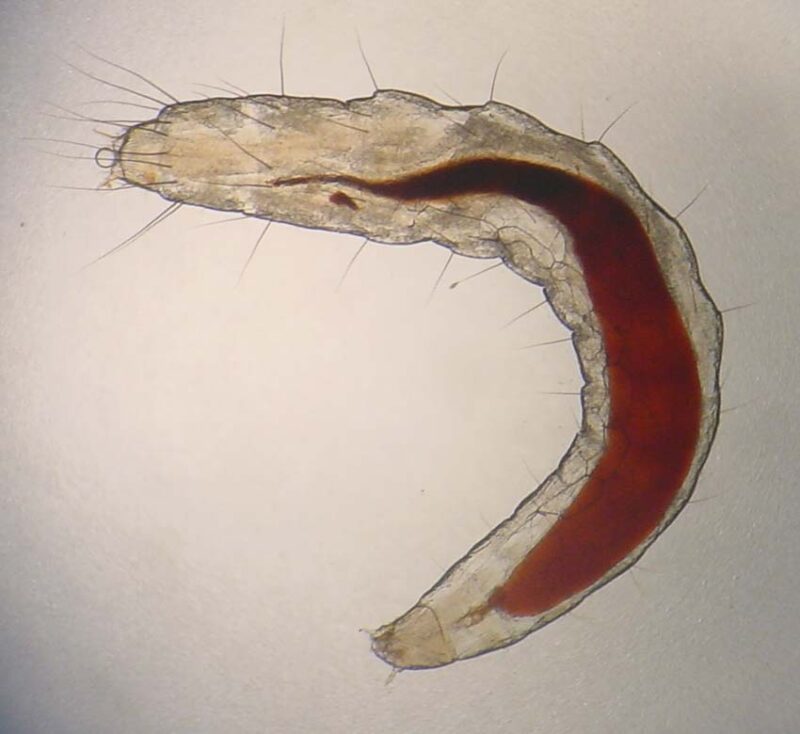
Like many insects, fleas undergo metamorphosis to develop from an egg into an adult.
There are four stages in the flea life cycle, including eggs, larvae, pupae, and adults. Depending on the conditions and environment, flea lifecycles vary in length from a few weeks to several months.
Eggs–After taking a blood meal from its host, an adult flea finds a mate and lays eggs. Eggs usually hatch within 5 to 10 days, depending on conditions like temperature and humidity.
Larvae–The larvae feed on “flea dirt,” which is the red to black specks that are visible on your pet’s skin. Flea dirt is excreted feces of adult fleas, and it contains enough blood to support the larvae.
Pupae–After about 4 to 18 days in the larval stage, fleas start to pupate by spinning cocoons. The pupal stage can last as little as a few days or as long as a year.
Adults–Fleas can live two to three months as adults, and females, which live longer than males, comprise about 75% of the adult flea population. Each adult female flea lays 20 to 30 eggs per day, and because they don’t stick to their host, the eggs drop to the ground, where they can hatch and continue the life cycle on a new host.
Targeting Each Stage of Development
Warm weather often brings an increase in flea infestations because the optimal temperature for the flea lifecycle is 70 to 85°F (21 to 27°C).
Humidity is another factor in the lifecycle of fleas. The optimal humidity level for fleas is about 70%.
During optimal conditions, fleas reproduce quickly, and it’s hard to control them unless you target each stage of development. Use various natural methods, like diatomaceous earth and beneficial nematodes, to attack fleas during the larval and adult stages, when they are the most active.
If you’re using chemicals to treat your home and yard for fleas, be sure to use a variety of chemicals that target the reproduction of fleas, inhibit their growth, and kill them during the adult stage. Use oral medications (available by prescription from veterinarians) that contain IGRs and IDIs to inhibit the reproduction and growth of fleas, and treat adult fleas with aerosols and shampoos.
Continuous Treatment for Lasting Results
Serious flea infestations require continuous treatment for lasting results. Talk to your veterinarian about how often your pet must take prescription oral medications.
Continue to kill adult fleas with repeat spraying and indoor fogging every two weeks until they are no longer visible in your home.
You should also treat your yard for fleas so that your pets don’t continue to bring them indoors. Focus your efforts on shady areas and dark places where fleas like to hide. Then, continue to follow best yard care practices to prevent flea infestations.
Services that Get Rid of Fleas in Your Yard
If your DIY pest control efforts haven’t proven effective, you can call professional services to help you get rid of fleas in your yard.
Hiring a Professional Pest Control Service
Professional pest control services are trained to address flea infestations and can help you get rid of fleas quickly. In addition, they will work with you to design a flea treatment plan for your home, including a complete home inspection, yard perimeter treatment, indoor treatment, and follow-up services.
Finding a Reputable Pest Control Company
When selecting a reputable pest control company, look for quality and value. Compare prices, but be sure to consider the quality of services offered, and don’t hesitate to check online reviews or ask for references.
It pays to do your homework when you’re investigating a pest control company because it can be costly, and you need results. Ask prospective companies about the methods they use and their certifications.
You can follow up with state pesticide regulatory agencies to determine if they are reputable.
Best Products to Get Rid of Fleas in Your Yard
These are the top-rated products for getting rid of fleas in your yard.
Top-Rated Flea Control Products
The best flea control products are available as sprays, concentrates, traps, baits, and preventative flea treatments for pets. Use these recommendations for the best results.
Flea Spray and Concentrates
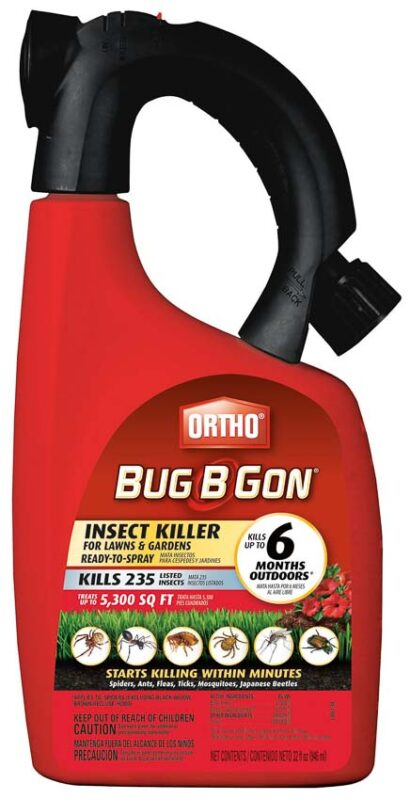
When it comes to chemical sprays and concentrates, these are the top picks to get quick results:
- Ortho Bug B Gon
- Vet’s Best Flea and Tick Yard and Kennel Spray
- Adams Plus Flea and Tick Spray
- Sevin Concentrate Bug Killer
Flea Traps and Bait
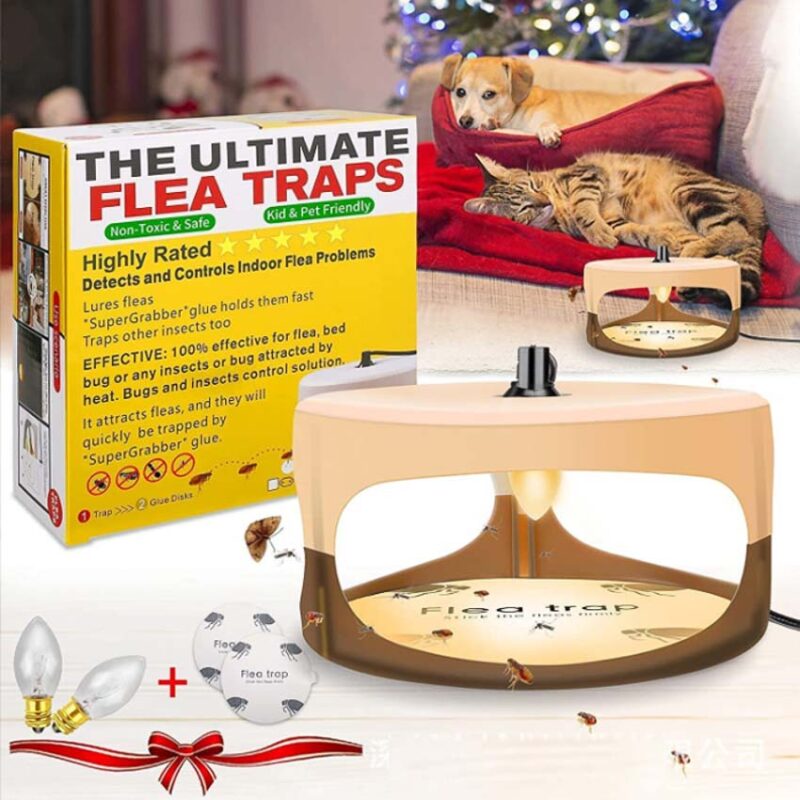
Several types of flea traps simulate warm host bodies to lure fleas.
- Terro T230 Indoor Electric Flea Light Refillable Flea Trap and Killer
- Biguy Sticky Dome Flea Trap
Preventative Flea Treatments for Pets
You should talk to your vet if you have a severe flea infestation. However, you can get several flea treatments to prevent flea infestations, and they don’t require a prescription.
- Pupper Omega
- Flea Away All Natural Supplement for Fleas
- Bravecto Chewable
- PetArmor Plus Flea and Tick Prevention for Dogs
Frequently Asked Questions about Getting Rid of Fleas in Your Yard
How do I know if I have fleas in my yard?
The easiest way to tell if you have fleas in your yard is to walk through your grass with light-colored shoes and socks. You can easily see the fleas jumping on your feet and ankles.
How long does it take to get rid of fleas in my yard?
Getting rid of fleas is difficult, and it can take several months to control moderate to severe infestations.
Continue to treat your yard and pets; with time and patience, you will see results. Don’t hesitate to get help from pest control professionals if you’re worried your efforts aren’t effective.
Are there any natural remedies to get rid of fleas in my yard?
There are natural methods for eliminating fleas in your yard, but they require more patience and persistence than quicker chemical methods. Keep your yard clean, mow your grass regularly, and apply beneficial nematodes and diatomaceous earth to get rid of fleas in your yard without the use of harsh chemicals.
How can I prevent fleas from coming back to my yard?
Once you’ve eliminated a flea infestation in your home and yard, you’ll want to keep them from returning. Practice good sanitation in your yard and keep your grass mowed regularly.
It’s also helpful to get rid of cats and raccoons because they can carry fleas.
Do I need to treat my pets for fleas if I treat my yard?
If you have fleas in your yard, it’s quite likely that your pet has been exposed.
First, watch for signs of scratching, and use a magnifying glass to inspect your pet closely. If you notice signs of fleas, you can treat them immediately with flea and tick shampoo.
Then contact your veterinarian for a prescription for oral medication that keeps fleas from reproducing.

